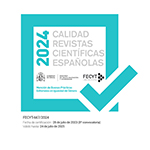Relatos sobre el juego de casitas en pandemia: entre familias y políticas públicas
Resumen
A raíz del COVID 19 y la disposición del aislamiento social, la familia se convirtió en el espacio exclusivo de interacciones para niñas y niños. Nos preguntamos cómo las familias vivieron esta experiencia cotidiana transformada y problematizamos cómo se desarrollaron las funciones de acompañamiento. Indagamos cómo se sostuvieron estas funciones desde ciertas políticas públicas, como las implementadas desde el Programa de Centros Infantiles de Gestión Directa (Ministerio de Desarrollo Social, Córdoba, Argentina). Iniciamos un trabajo de campo exploratorio, utilizando dispositivos de telefonía celular para contactar a niños y niñas de hasta 10 años. Identificamos como recurrencia la construcción de casitas, juego que posibilita tramitar experiencias que resulten incomprensibles o traumáticas, rasgos de la vivencia de aislamiento y distanciamiento social. Problematizamos la disponibilidad adulta como habilitadora de relatos que movilizan este tipo de juegos. Para ello recuperamos aportes de la Semiótica, la Psicomotricidad y la Psicología. Los resultados de esta indagación aportan al debate para la definición de políticas públicas dirigidas a las infancias, que permitan reconocer y habilitar mejores condiciones para el despliegue de este tipo de juego.
Descargas
Descarga artículo
Licencia
La revista Sociedad e Infancias, para fomentar el intercambio global del conocimiento, facilita el acceso sin restricciones a sus contenidos desde el momento de su publicación en la presente edición electrónica, y por eso es una revista de acceso abierto. Los originales publicados en esta revista son propiedad de la Universidad Complutense de Madrid y es obligatorio citar su procedencia en cualquier reproducción total o parcial. Todos los contenidos se distribuyen bajo una licencia de uso y distribución Creative Commons Reconocimiento 4.0 (CC BY 4.0). Esta circunstancia ha de hacerse constar expresamente de esta forma cuando sea necesario. Puede consultar la versión informativa y el texto legal de la licencia.










